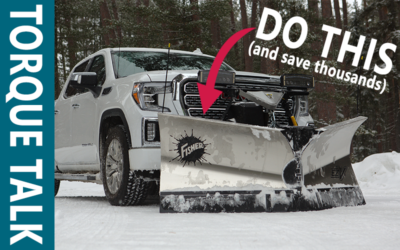Order Matters: Hooking Up For A Battery Boost
By: Parts for Trucks

We’ve all been there – the dreaded dead battery. Whether you’re stranded in a parking lot or on a remote road, jump-starting your vehicle can be a lifesaver. However, it’s crucial to approach this task with caution to ensure safety for yourself and your vehicle. In this guide, we’ll take a closer look at the steps for jump-starting a vehicle while providing essential safety tips along the way.
Jump-Starting Your Vehicle: Step-by-Step
1. Prepare for Safety:Before you begin, take a moment to ensure your safety. First and foremost, remember to shield your eyes and face from batteries at all times. Safety glasses or a face shield can provide added protection.
2. Positive Cable Connection: Start by connecting the positive [+] cable to the positive post of the discharged battery. This is typically indicated with a plus sign. Ensure the cable is secure.
3. Positive Cable to Starting Vehicle: Take the other end of the same cable, the one with the positive [+] connector, and attach it to the positive post of the starting vehicle’s battery. Again, make sure it is securely connected.
4. Negative Cable Connection: Next, grab the second cable, which is usually color-coded in black or marked with a negative [-] sign. Connect it to the negative post of the booster battery (the fully charged one).
5. Final Connection: To complete the connection process, attach the other end of the negative cable to a suitable point on the stalled vehicle’s engine block. Make sure it is away from the battery to avoid sparks near potentially explosive gases. Stand back to maintain a safe distance.
6. Start the Vehicle: With all the connections securely in place, start the vehicle with the dead battery.
7. Remove Cables in Reverse Order: Once the stalled vehicle starts, it’s time to remove the jumper cables. Begin by disconnecting the negative cable from the engine block. Then, remove the negative cable from the booster battery, followed by the positive cable from both batteries. Always take care not to let the cable clamps touch each other or any metal surfaces during removal.
8. Safety Precautions: After successfully jump-starting your vehicle, remember a few important safety precautions. Avoid jump-starting a damaged battery, and ensure that vent caps on both batteries are tight and level. Placing a damp cloth over the vent caps can further minimize the risk of battery explosions. Additionally, be certain that the two vehicles do not touch each other during the process and ensure that their ignitions are turned off.
Jump-starting a vehicle can be a convenient solution when you’re faced with a dead battery. However, it’s vital to prioritize safety during this process. By following these step-by-step instructions and adhering to the safety precautions outlined, you can safely get your vehicle back on the road in no time. Always remember that safety should be your top priority, and when in doubt, seek professional assistance for a safer and more reliable solution to your battery issues.

Belts Don’t Last Forever
Proactive belt inspections prevent downtime. Choose the right fan belt for seamless, reliable vehicle performance.
Parts for Trucks Inc. announces acquisition of Trailine Trailer Parts in Surrey, BC.
Hey Vancouver (well Surrey technically), meet Parts for Trucks!
Mistakes EVERYONE Makes when Putting Away their Fisher Equipment for the Summer
If you’re tired of dealing with rusted components or damaged belts when you take out your plow after a long summer of storage, this video is for you. Don’t make the same mistakes as everyone else.





